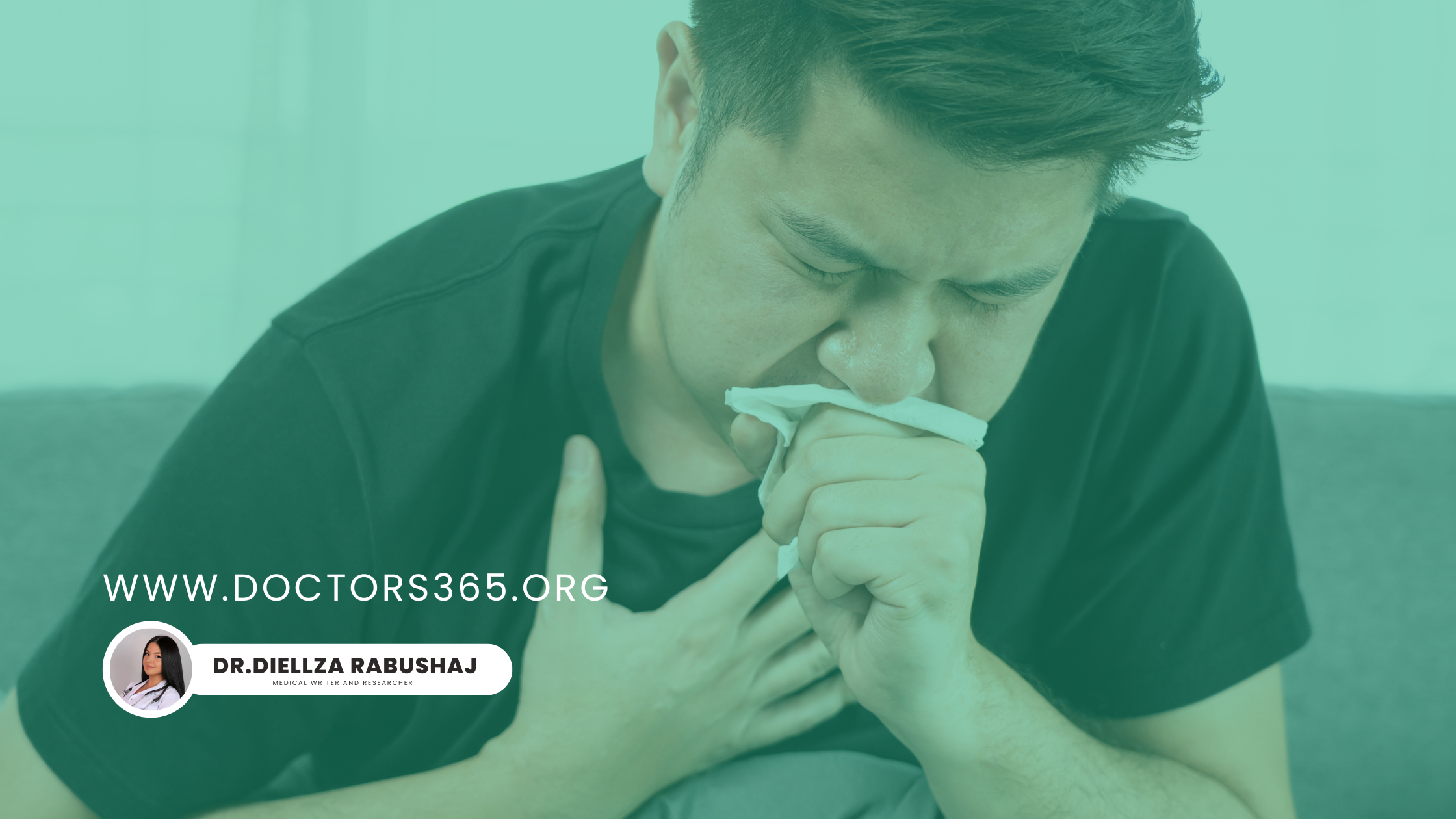
Ear, Nose & Throat (ENT)
Flu vs. COVID-19 vs. RSV
How to tell flu, COVID-19, and RSV apart—and what to do next.
Unsure whether you have flu, COVID-19, or RSV? This doctor-written, medically reviewed guide explains how each illness typically starts and evolves, what patterns to look for by age, when to test, and when to seek urgent in-person care. We summarize the most consistent differences reported across comparative studies—abrupt fever/aches in flu, smell/taste loss and GI symptoms in COVID-19, and wheeze with increased breathing effort in infants with RSV—while emphasizing that symptoms overlap and testing often decides the diagnosis. Get practical home-care tips, understand antiviral options, and book a secure, same-day online visit with a Doctors365 specialist to personalize your plan.
Flu vs. COVID vs. RSV: How to tell the difference in symptoms (and what to do next)
Disclaimer: This article is for educational purposes only and is not a substitute for professional medical advice, diagnosis, treatment, or emergency care. If you (or your child) have severe breathing difficulty, chest pain, bluish lips/face, confusion, dehydration, or a rapidly worsening condition, call your local emergency number or go to the nearest emergency department immediately.
Author: Dr. Diellza Rabushaj
1. Why this matters right now
Flu (influenza), COVID-19, and RSV are the “big three” respiratory viruses that surge every cold season. They can look deceptively similar at first—fever, cough, sore throat, fatigue—yet the risks and management can differ by age and health status. Distinguishing them early helps you decide on testing, isolation precautions, antivirals where appropriate, and when to seek in-person care. Evidence from comparative studies shows clear patterns by age group, timing of symptoms, and hallmark features, while also reminding us there’s significant overlap—so testing is often necessary to confirm the cause [1–5].
2. How symptoms typically begin and evolve
Most people notice a combination of fever, cough, runny or blocked nose, sore throat, headache, body aches, and fatigue. What’s different?
- Influenza (flu): Often begins abruptly with high fever, chills, prominent body aches, and profound fatigue. Older children and adults are classically affected, and fever tends to be more pronounced than with many COVID-19 cases [2–5].
- COVID-19: May start more gradually. Loss of smell (anosmia) and taste (dysgeusia) and gastrointestinal symptoms (e.g., diarrhea) are more strongly associated with COVID-19 than with flu in several adult cohorts [2,3,5]. Chest imaging abnormalities and longer incubation have also been more frequent with COVID-19 in pooled analyses [2].
- RSV: In infants and young children, RSV frequently causes wet cough, wheeze, nasal blockage, and increased breathing effort. Compared to COVID-19 and flu, hospitalized children with RSV often require more respiratory support and ICU-level care, especially under age two [1,4].
Key take-home: There is no single symptom that rules in or out one virus by itself; symptom clusters can guide suspicion, but testing is what confirms the diagnosis [1–3].
3. Age patterns you shouldn’t ignore
- Infants and toddlers: RSV is a major driver of bronchiolitis and hospital use in the first two years of life. In recent seasons, RSV-positive children were younger at admission and sicker on average than those with influenza or COVID-19, needing oxygen or ventilatory support more often [4].
- School-age children and teens: Influenza becomes more common beyond age two, frequently with high fever and aches; COVID-19 also circulates in this group, but sensory changes (loss of smell/taste) stand out when present [1–3,5].
- Adults: Flu tends to hit fast and hard; COVID-19 can feature loss of smell/taste and GI symptoms and has been linked with more frequent lung imaging changes and longer hospital stays in early comparative data [2,3,5].
- Older adults or those with chronic illness: Any of the three can cause complications (pneumonia, COPD/asthma exacerbations, heart strain). A lower fever doesn’t equal a mild illness in this group—watch the work of breathing, mental status, and hydration.
4. Practical “pattern recognition” without a lab test
While you should test to be sure, these real-world cues can help you triage:
- A sudden, high fever with severe body aches that “floors” you on day one often suggests influenza [2–5].
- Loss of smell/taste, unusual diarrhea, and a more gradual onset lean toward COVID-19 [2,3,5].
- In babies and toddlers, wheeze, nasal blockage, wet cough, labored breathing (flared nostrils, chest retractions), or pauses in breathing strongly suggest RSV and warrant prompt assessment [1,4].
Because these clusters overlap and seasons often bring co-circulation, confirmatory testing is the safest path when the result will change your care plan (treatment, isolation, protecting high-risk contacts) [1–3].
5. What’s suitable for online care vs. in-person attention
Appropriate for online care (with home monitoring):
- Mild to moderate symptoms: fever, sore throat, cough, runny nose, headache, fatigue.
- Guidance on testing (rapid antigen/PCR), antivirals eligibility for flu or COVID-19, and supportive care (fever control, hydration, nasal saline, inhaler technique).
- Action plans for asthma/COPD flares, reviewing inhalers/spacers, and home pulse-oximeter use.
Red flags → seek urgent in-person care:
- Severe breathing difficulty, fast or labored breathing, bluish lips/face, noisy breathing/wheezing that doesn’t respond to usual meds.
- Altered mental status, new confusion, seizures, or fainting.
- Signs of dehydration (very dry mouth, no tears, minimal urine output, lethargy), especially in infants/young children.
- Persistent high fever >3 days or fever returning after initial improvement.
- Chest pain, oxygen saturation <92–94% at rest (home oximeter), or oxygen drop with minimal activity.
- High-risk patients (pregnant, immunocompromised, advanced age, severe chronic disease) with any worsening symptoms.
6. Testing & treatment—what to expect
- Testing: Rapid antigen and PCR tests are available for influenza and COVID-19; combined panels may also detect RSV. Your doctor will recommend the right test at the right time (testing too early can give false negatives).
- Antivirals: If you’re at risk for complications or very early in illness, antivirals for influenza (e.g., oseltamivir) and COVID-19 (e.g., nirmatrelvir/ritonavir) may reduce severity and complications when started promptly. RSV care is mainly supportive (hydration, oxygen, bronchodilator trial in selected cases); preventive options (maternal RSV vaccine, infant monoclonal antibody) are seasonal and age-specific—ask your clinician.
- Supportive care: Fluids, rest, antipyretics, humidified air, saline nasal rinses, and—when prescribed—inhaled bronchodilators for wheeze. Monitor breathing and hydration closely in infants.
Comparative research underscores that while COVID-19 often shows more imaging abnormalities and longer hospital courses than influenza in adults, RSV tends to drive higher respiratory support needs in hospitalized children [1–4].
7. How Doctors365 works (fast, secure, evidence-based)
- Browse verified respiratory and internal-medicine specialists on doctors365.org by language, location, and experience.
- Pick a time that suits you—same-day and after-hours slots are often available.
- Confirm & pay online through our secure, encrypted platform.
- Join your visit via private, end-to-end encrypted video.
- Receive a summary, test orders where appropriate, and e-prescriptions after your visit.
Benefits: 24/7 access, privacy, no travel or waiting room exposure, and often lower overall cost compared to urgent in-person visits for non-emergencies. Our governance framework, identity verification, and encryption standards protect your data and ensure quality of care.
8. Featured Doctors365 specialists for respiratory concerns
- Dr. Hayder Ghali Wadi Algawwam — General & Internal Medicine; strong experience in pulmonology and TB control. Book: here
- Dr. Alexander Maat, MD PhD — Thoracic/Cardiothoracic Surgeon; lung surgery & transplant experience. Book: here
- Dr. Ahd Abou Hechme — Internal Medicine; performs bronchoscopy and pleural procedures (relevant in complex respiratory disease). Book: here
(Tap a profile to view languages, credentials, and earliest availability.)
9. Pricing & availability
Consultation prices vary by specialty and appointment length; you’ll see the exact fee before booking. Many doctors offer same-day or after-hours appointments during peak respiratory season. Follow-ups are typically shorter and lower-cost than initial visits.
10. How to prepare for your online respiratory visit
- List your symptoms with dates (onset, peak day, current status).
- Note fever readings, home oxygen saturation, and respiratory rate if available.
- Have your medication list (inhalers, recent antibiotics/antivirals) and allergies ready.
- Keep recent test results (COVID/flu/RSV) handy—or plan to discuss testing options.
- For children: note wet vs. dry cough, wheeze, feeding, diaper counts, and any retractions or pauses in breathing.
- Ensure a quiet, well-lit space and a charged device with a stable connection.
11. When you’re unsure—test and protect others
Because symptoms overlap, assume you may be contagious. Until you know what you have:
- Wear a high-filtration mask in shared indoor spaces,
- Keep distance, improve ventilation, and
- Avoid high-risk contacts (elderly, immunocompromised, infants).
Studies across adults and children confirm meaningful symptom overlap without a single discriminatory sign; this is why targeted testing remains the safest, most actionable step when illness could affect treatment or isolation decisions [1–3].
12. Ready to speak to a doctor? (Strong CTAs)
- Book a same-day respiratory consultation now → here
- See lung & airway specialists → here
- Explore all cardiothoracic/thoracic surgeons (for complex cases) → here
13. FAQs
1) How can I tell flu from COVID-19 without a test?
You often can’t with certainty. Sudden, high fever and body aches suggest flu; loss of smell/taste and GI symptoms lean COVID-19. But because these patterns overlap, testing is recommended when results will change your care plan [2,3].
2) Is RSV only a problem for babies?
Mostly for infants and toddlers, who can develop wheeze and breathing difficulty. Adults can catch RSV too, but severe disease is far less common unless they’re older or have chronic conditions. Hospital data show RSV places a heavier respiratory burden on young children than flu or COVID-19 during peak seasons [1,4].
3) Do antivirals work for all three?
Antivirals exist for flu and COVID-19 and work best when started early in eligible patients. RSV treatment is mainly supportive; prevention strategies (e.g., seasonal immunization approaches) are age- and risk-specific—ask your doctor.
4) My child’s fever is down but the cough is worse—normal?
It can be. Cough often lingers as the airways recover. Watch for worsening work of breathing, wheeze, dehydration, or new fever—those need reassessment.
5) When should I head to urgent care or the ER?
Go urgently for severe breathing difficulty, bluish lips/face, confusion, chest pain, oxygen saturation <92–94%, or in infants: poor feeding, no wet diapers, or visible chest retractions.
14. Conclusion
Flu, COVID-19, and RSV share many features, yet certain age-linked patterns and signature symptoms can point you in the right direction—flu with abrupt high fever/aches, COVID-19 with smell/taste loss and GI symptoms, and RSV with wheeze and increased effort in infants. Because no single symptom is exclusive, testing is often the decisive step. If you’re unsure, our doctors can help you choose the right test, initiate timely treatment, and create a home-care plan.
Start your secure consultation today → here
References
- Balas WM, Śliwczyński A, Olszewski P, Gołębiak I, Sybilski A. Comparative Analysis of Symptomatology in Hospitalized Children with RSV, COVID-19, and Influenza Infections. Med Sci Monit. 2023. Available from: https://pubmed.ncbi.nlm.nih.gov/37950434/
- Pormohammad A, Ghorbani S, Khatami A, Razizadeh MH, Alborzi E, et al. Comparison of influenza type A and B with COVID-19: A global systematic review and meta-analysis on clinical, laboratory and radiographic findings. Rev Med Virol. 2020. Available from: https://pubmed.ncbi.nlm.nih.gov/33035373/
- Zayet S, Kadiane-Oussou N, Lepiller Q, Zahra H, Royer P, et al. Clinical features of COVID-19 and influenza: a comparative study on Nord Franche-Comte cluster. Microbes Infect. 2020. Available from: https://pubmed.ncbi.nlm.nih.gov/32561409/
- Rao S, Armistead I, Tyler A, Lensing M, Dominguez S, et al. Respiratory Syncytial Virus, Influenza, and Coronavirus Disease 2019 Hospitalizations in Children in Colorado During the 2021-2022 Respiratory Virus Season. J Pediatr. 2023. Available from: https://www.vaccineadvisor.com/news/oxygen-support-needs-greater-in-children-with-rsv-vs-influenza-or-covid-19-2/
- Faury HB, Courboulès C, Payen M, Jary A, Hausfater P, et al. Medical features of COVID-19 and influenza infection: A comparative study in Paris, France. J Infect. 2020. Available from: https://pmc.ncbi.nlm.nih.gov/articles/PMC7426213/
Written by Diellza Rabushaj, Medical Writer & Researcher.
Recommended articles for You

How to tell flu, COVID-19, and RSV apart—and what to do next.

AI now helps doctors diagnose faster and more accurately—book a secure online visit on Doctors365.

Early ADHD signs explained—and how online care helps now.